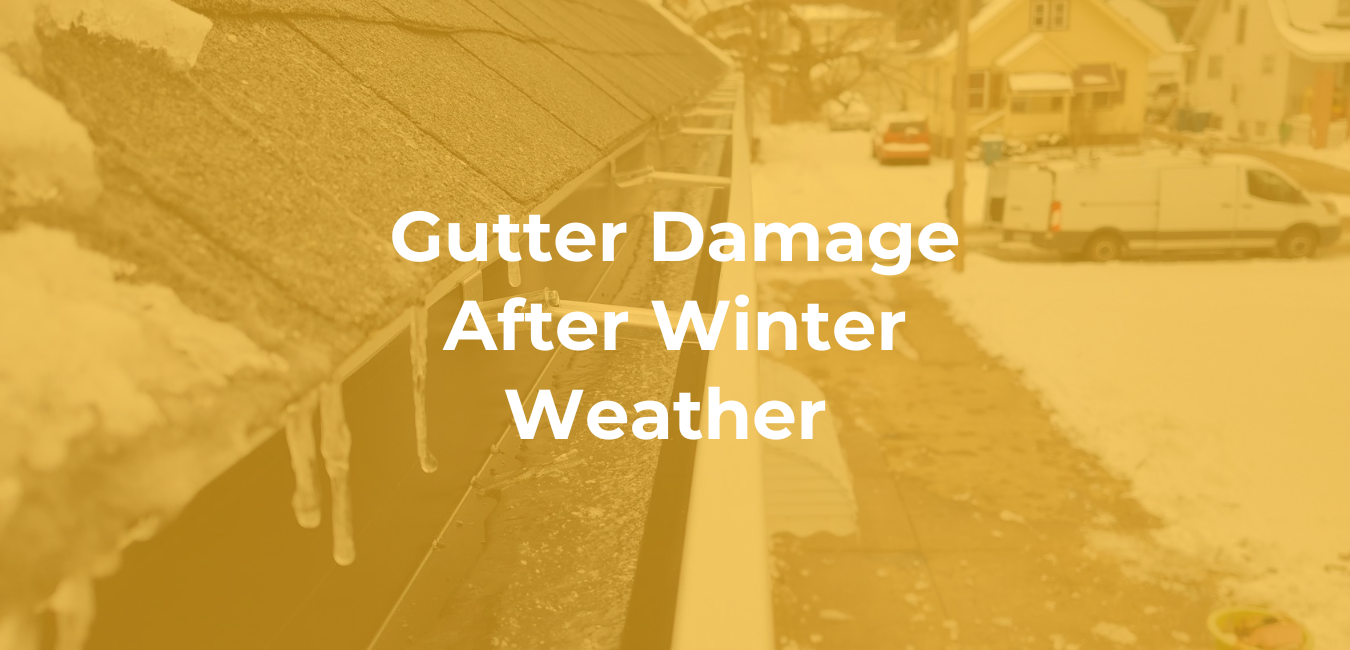As winter fades away and spring approaches, it’s essential to assess your property’s exterior for any damage caused by harsh weather conditions. Your gutters play a critical role in directing water away from your property and protecting your roof, siding, and foundation. However, snow, ice, and freezing temperatures can take a toll on your gutter system. Spotting gutter damage after winter weather early on can help prevent costly repairs and keep your property in top condition.
In this guide, we’ll walk you through common signs of gutter damage after winter weather and what steps to take next.
Why Gutters Are Vulnerable to Winter Damage
Winter weather can be particularly tough on gutters due to freezing temperatures, heavy snow, and ice buildup. When water from melting snow freezes in your gutters, it creates ice dams that can cause gutters to crack, sag, or even detach from your property. Additionally, the weight of snow and ice can strain the gutter system, leading to structural damage.
Recognizing these issues early is the key to preventing further damage as spring rains arrive.
Signs of Gutter Damage to Look For
- Sagging or Detached Gutters
If you notice your gutters pulling away from your property or sagging in certain spots, it’s likely a result of heavy snow and ice weighing them down. Sagging gutters can’t properly direct water away, which increases the risk of water pooling around your foundation.
- Cracks or Splits
Visible cracks or splits along your gutters may seem minor, but they can quickly worsen if not repaired. Even small cracks allow water to leak out, potentially damaging your siding or landscaping.
- Rust or Corrosion
Metal gutters are particularly susceptible to rust and corrosion after prolonged exposure to snow and ice. If you notice orange or brown spots, it’s a sign that moisture has compromised the gutter’s surface.
- Clogged Gutters and Downspouts
Winter storms often leave behind debris like twigs, leaves, and ice. Clogged gutters prevent water from flowing freely, which can lead to overflow and water damage. Check for blockages in both gutters and downspouts.
- Water Stains or Pooling Water
After a thaw, inspect the areas beneath your gutters for water stains or water pooling. These can indicate leaks or improperly functioning gutters that aren’t directing water away from your property.
- Loose Fasteners or Hardware
Ice expansion can loosen the screws or brackets holding your gutters in place. Inspect the hardware to ensure everything is secure and aligned.
What to Do If You Spot Gutter Damage
If you notice any of these signs, it’s important to address the damage as soon as possible. Here’s what you can do next:
- Schedule a Professional Inspection: A thorough inspection by Aspen Contracting can identify hidden damage and recommend the best course of action.
- Clean Your Gutters: Remove any debris to restore proper water flow and prevent further clogging.
- Repair or Replace Damaged Sections: Small cracks or loose fasteners can often be repaired, while extensive damage may require replacing sections of your gutter system.
- Consider Gutter Guards: Installing gutter guards can help prevent debris buildup and ice dams in the future.
Protect Your Property This Spring
Your gutters are one of your property’s first lines of defense against water damage. Don’t let winter weather compromise their performance. With proactive inspection and timely repairs, you can protect your property and avoid costly damage.
Aspen Contracting specializes in gutter inspections, repairs, and replacements to ensure your property is ready for spring. Contact us today at 877-784-ROOF or visit roofsbyaspen.com to schedule your inspection and keep your gutters in top shape.


0 Comments